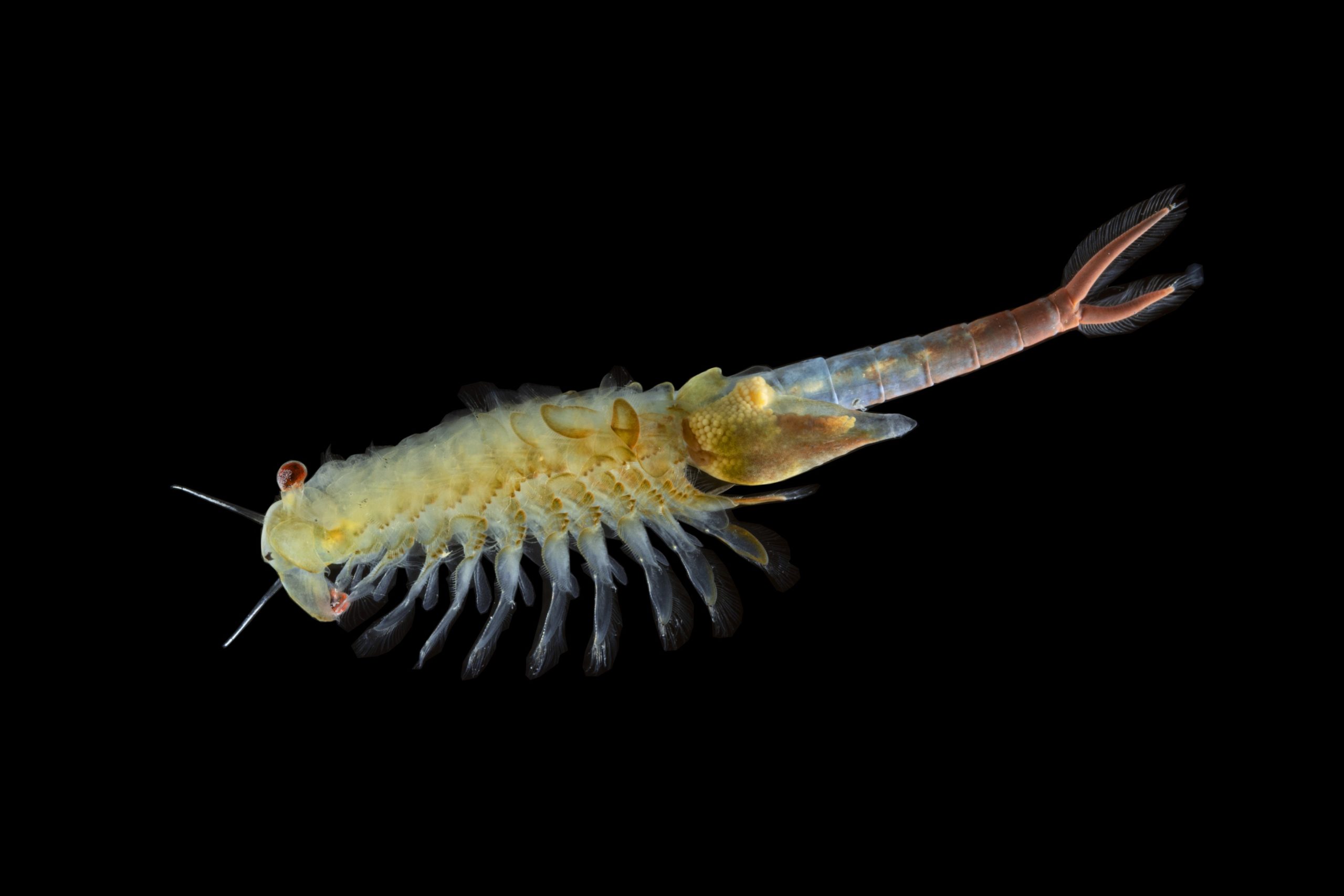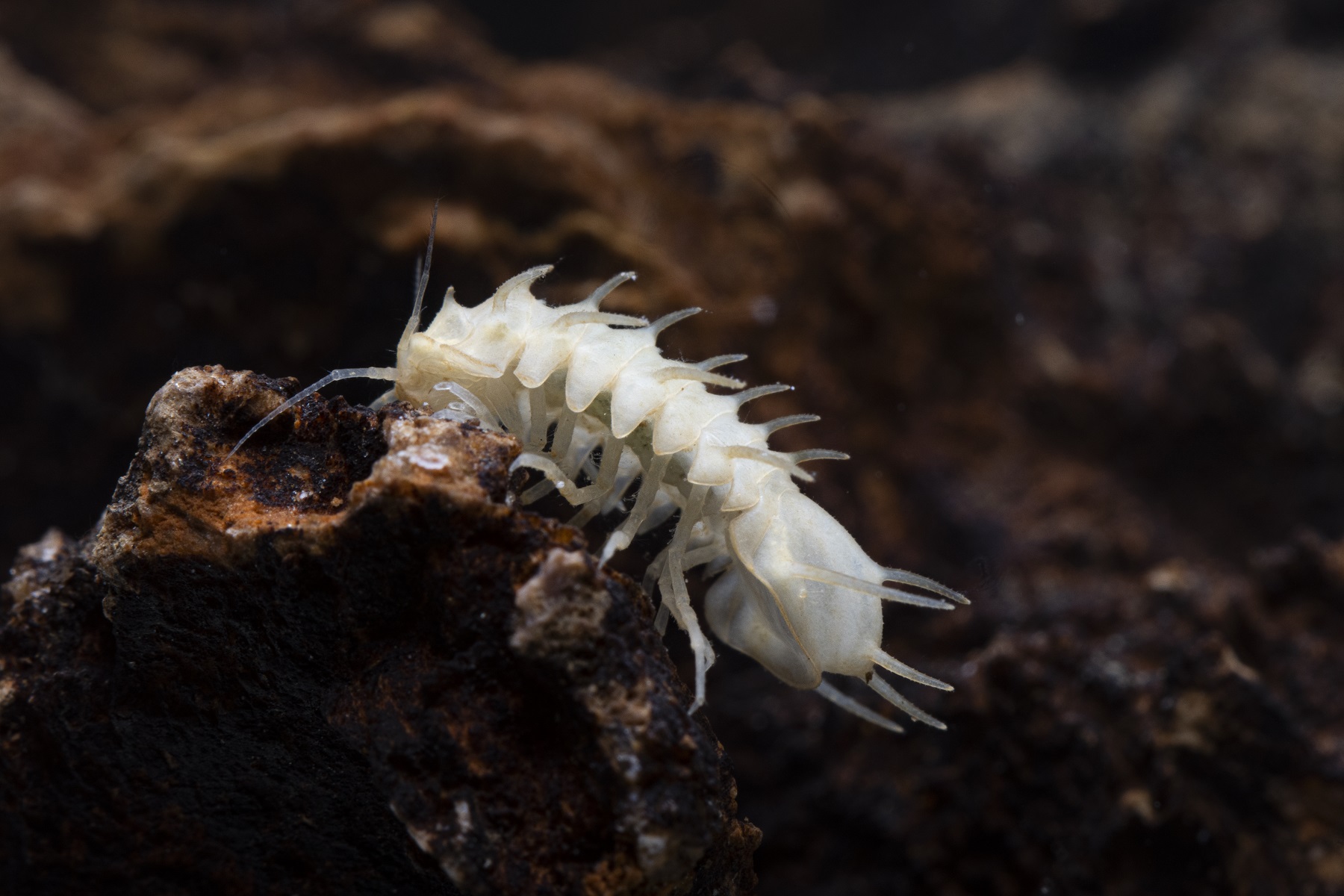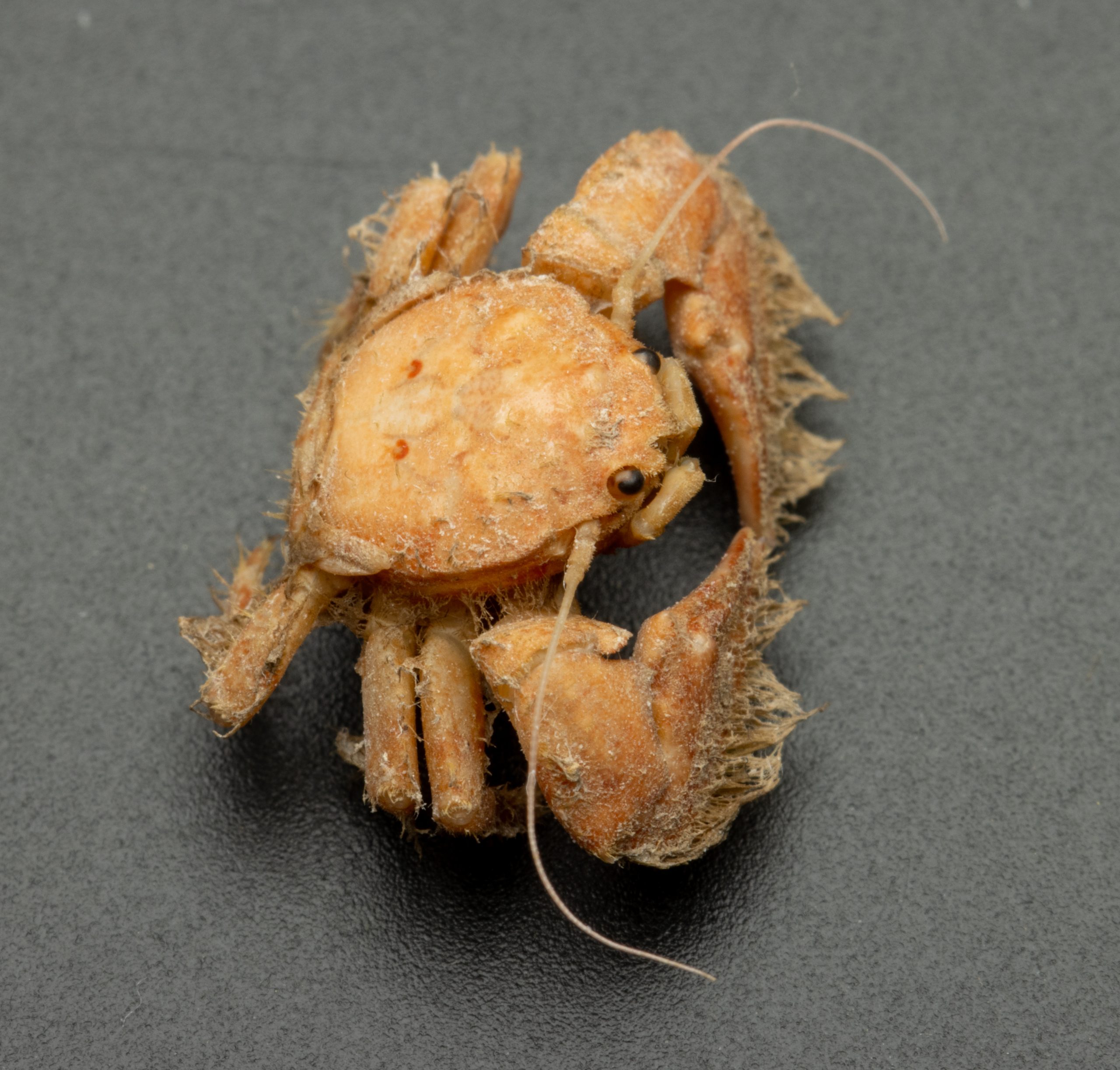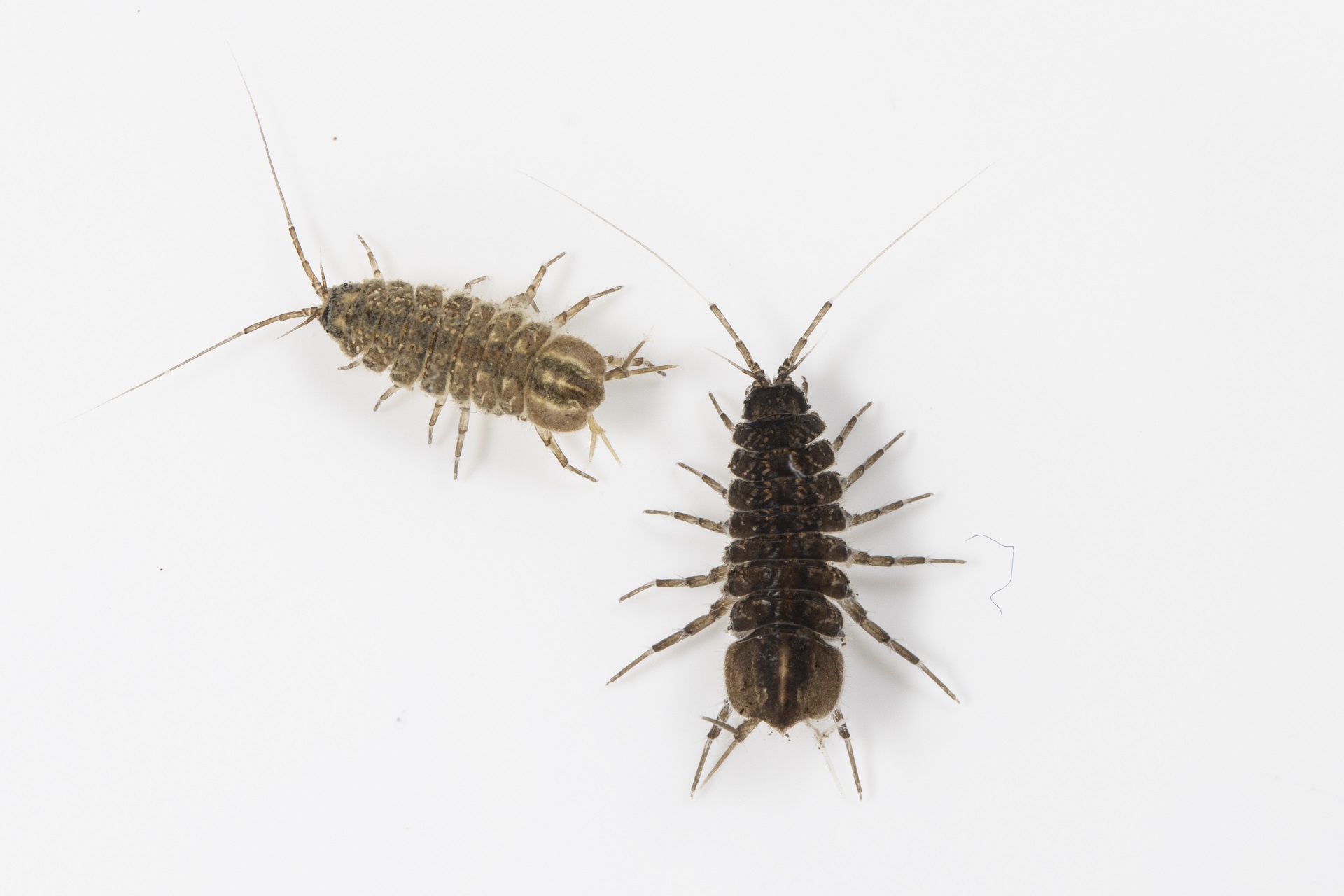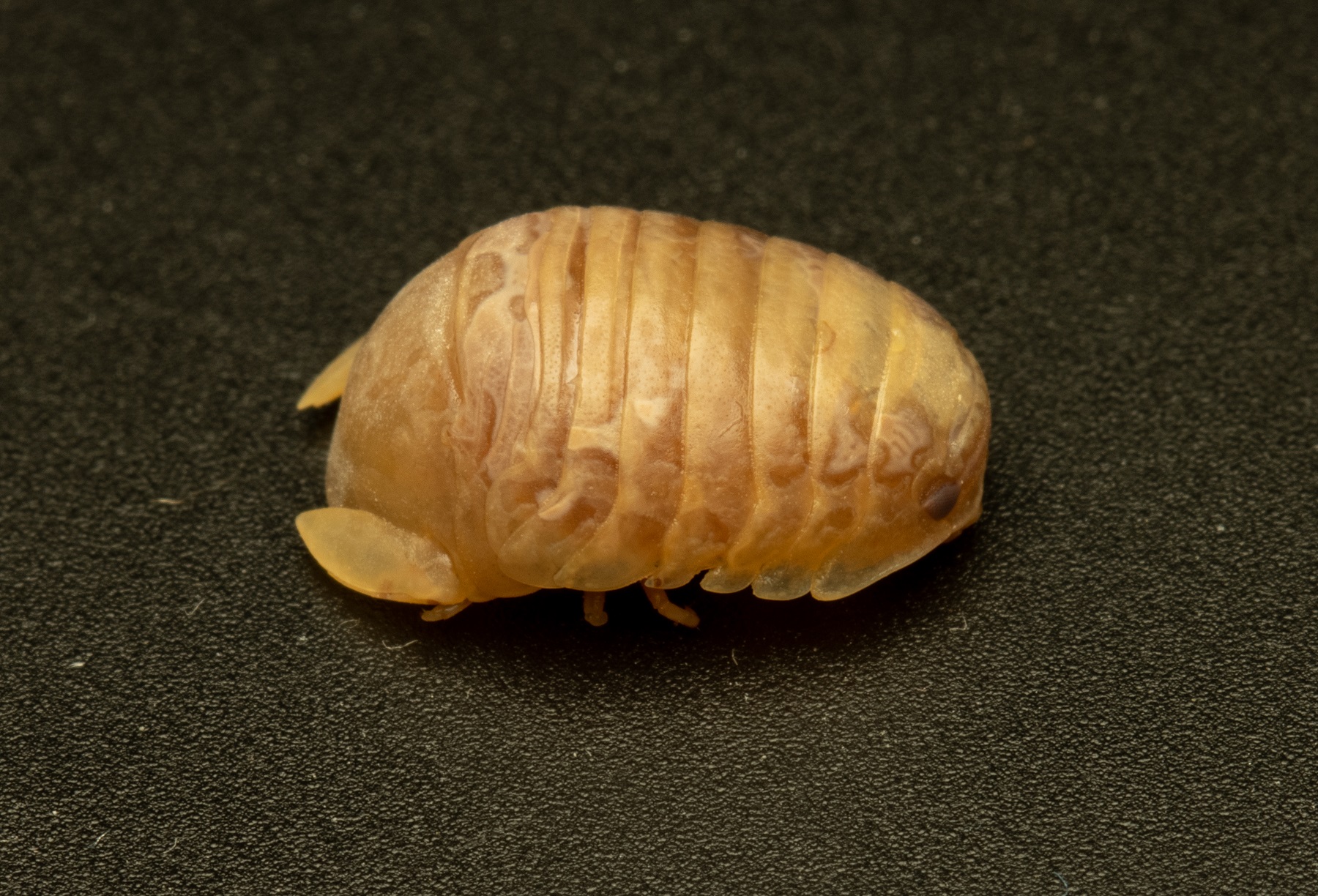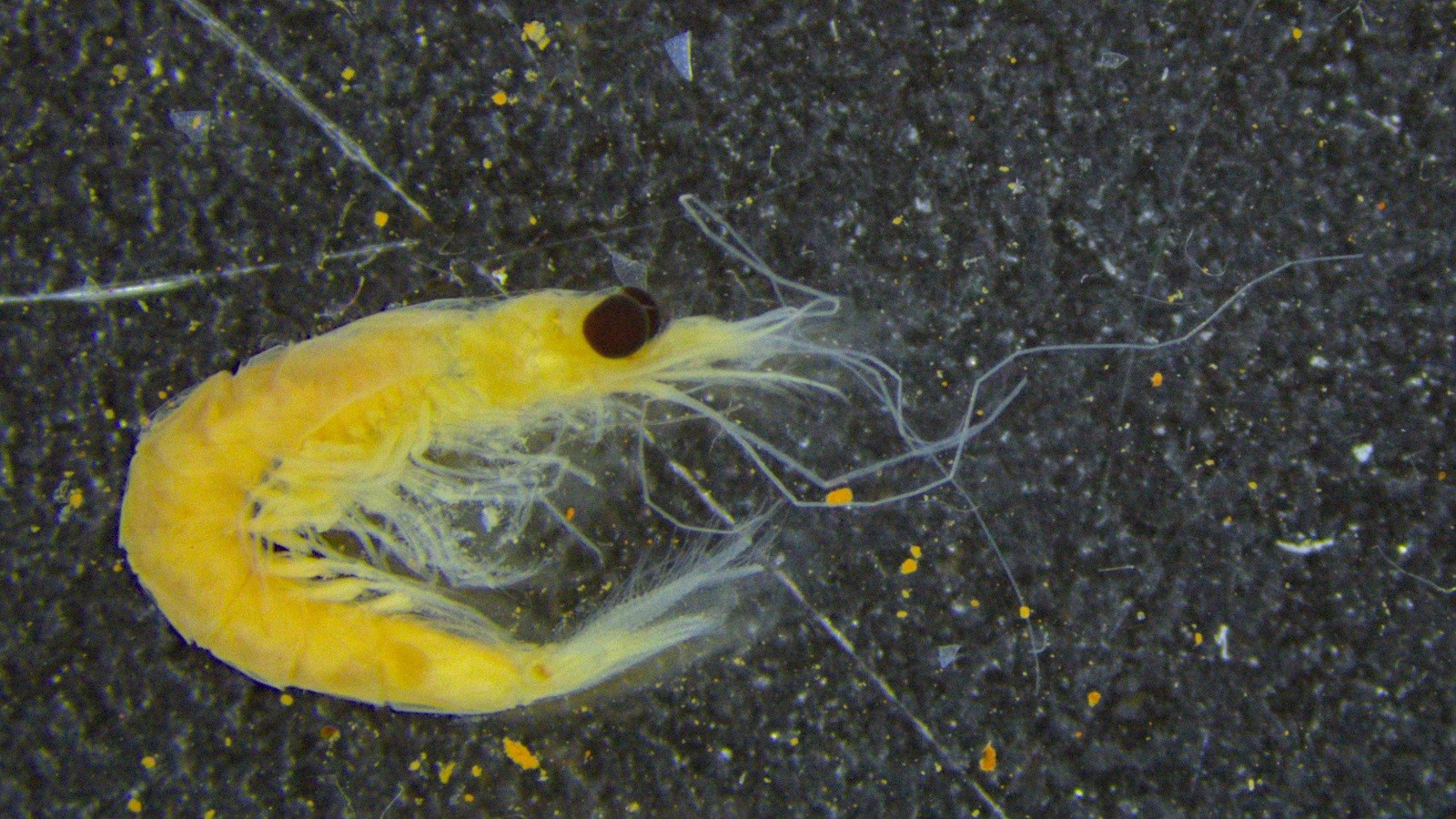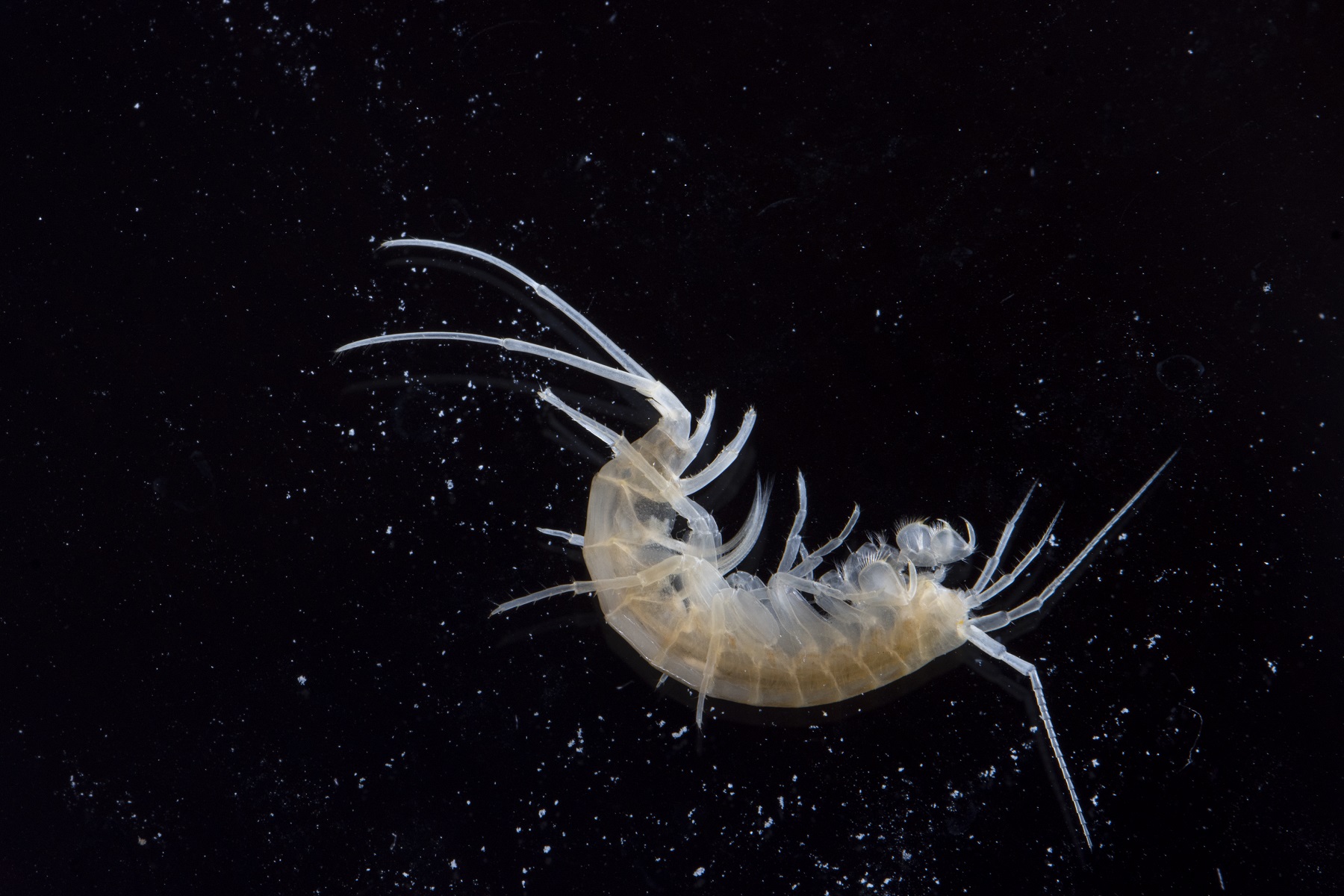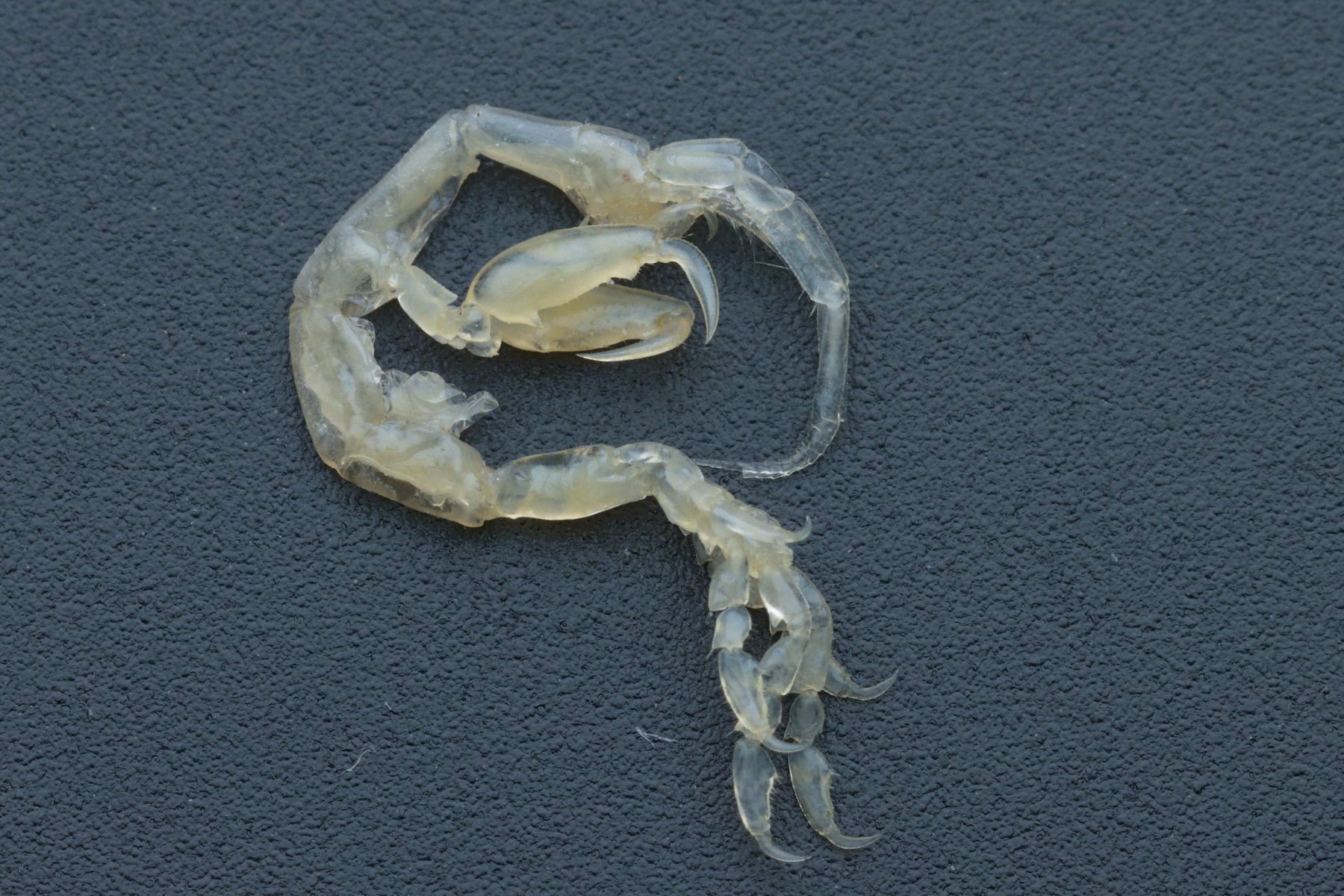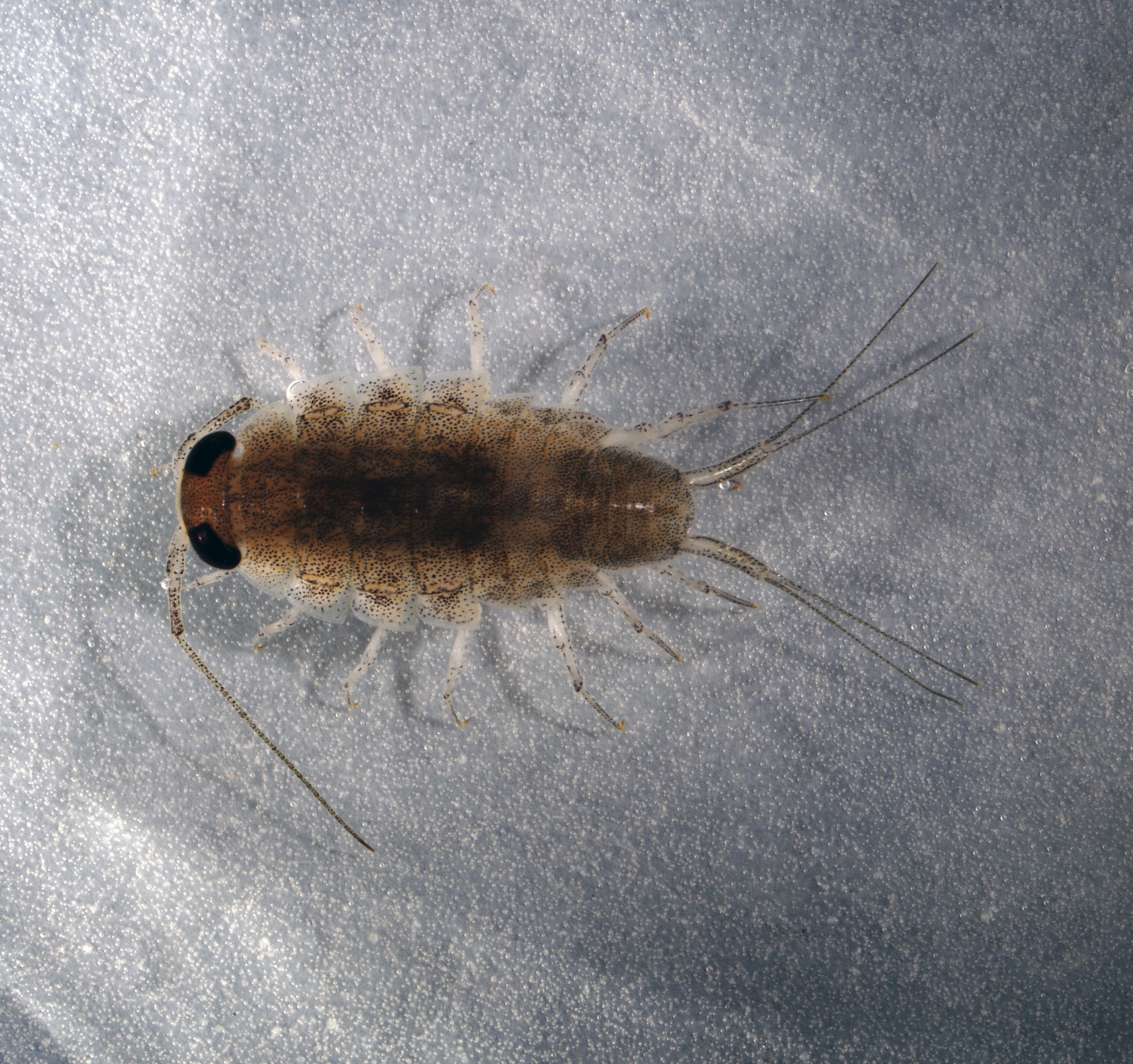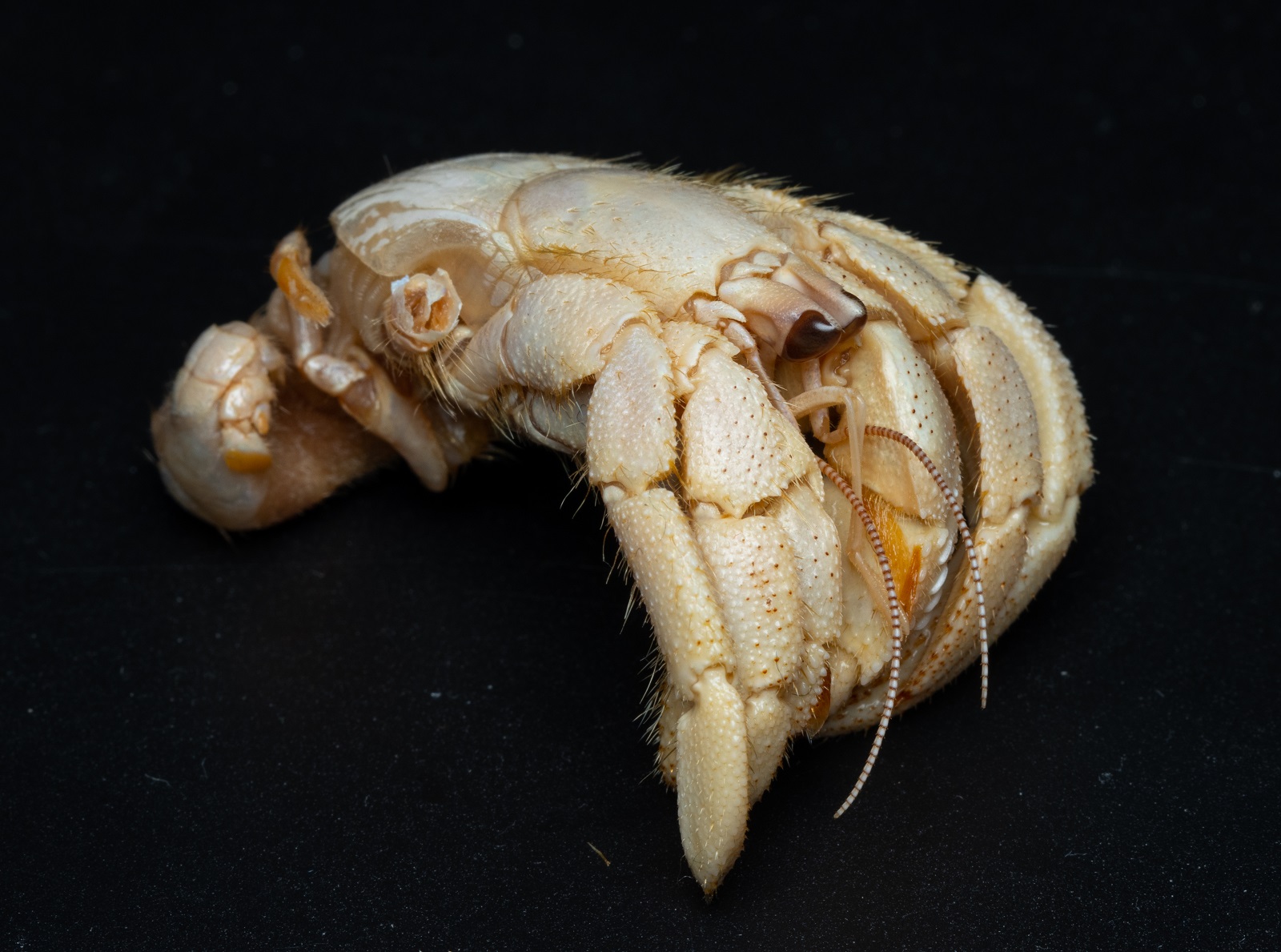- Crustaceans
Ligia italica
Sea slaters (genus Ligia) belong to the suborder of terrestrial isopods also known as woodlice (Oniscidea). The body of a sea slater consists of cephalothorax, pereon and abdomen (pelon). The cephalothorax includes six fused segments, the pereon includes seven segments and the abdomen includes six segments where the last abdominal segment is fused with telson into a pleotelson. The sea slaters belong to a sister taxon to all other terrestrial isopods and thus have certain unique characteristics not found in other woodlice: large compound eyes, long terminal part of second antennae consisting of numerous articles and long biramous uropods with branches of equal length.
The cephalothorax carries two pairs of antennae. The first pair is microscopic while the second pair is long and filiform. Mouthparts include a pair of mandibles, two pairs of maxiallae and a pair of maxillipeds.
The pereon bears seven pairs of similar walking legs.
The abdomen (pleon) has five pairs of biramous leaf-like pleopods. The pleotelson at the terminal end of abdomen carries a pair of long biramous uropods with two elongated braches of the same length. Sea slaters breathe with endopods (internal branches) of pleopods which are modified as gills. The endopods are submerged in a small droplet of water carried beneath the relatively tough exopods (external branches of pleopods).
The sea slaters inhabit tidal zone cliffs and rocky beaches. They are active during the daytime and can be thus frequently observed in their habitat. They are adapted to terrestrial lifestyle and complete their entire life cycle on land. However, if threatened they quickly retreat under the water surface.
Gravid females, as in other isopods, carry their eggs in a marsupium on the ventral side of pereon. The marsupium is formed by leaf-like processes of pereopods.
As a defense mechanism against predation, the sea slaters depend on flight. They are good and quick runners with long legs, elongated bodies and relatively light mineralized exoskeleton.
They frequently molt throughout their lifespan; in favorable conditions they molt once every two weeks. During premolt a fraction of calcium carbonate in the exoskeleton is dissolved and stored in the ecdysial space between the old and the new cuticle on the first four pereonic segments. On the ventral side of pereon the stored deposits are visible as white plates consisting of microscopic spheres of calcium carbonate. Similar deposits of calcium carbonate during premolt are characteristic also of other oniscideans. Since the molt in isopods is bipartite; the posterior half of the exoskeleton being molted before the anterior half; the calcium carbonate originating from the posterior half can be reused for the calcification of the anterior half.
More photos
Related arthropods
Authors
- Urban Bogataj,
- Gregor Bračko,
- Teo Delič,
- Cene Fišer,
- Žiga Fišer,
- Rok Kostanjšek,
- Rudi Verovnik,
- Miloš Vittori,
- Valerija Zakšek.
Students Vito Ham, Vesna Jurjevič, Gaj Kušar, and Adrijan Samuel Stell Pičman also participated in the project.

